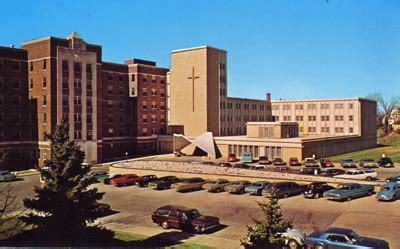
The medical staff at MCMC were not trained or ready for anything like what they experienced with the Hmong community. Language difficulty was a given, but lack of compliance, strong differences in cultural beliefs, hardships related to scientific discovery, and high birth rates, caused medical staff to become worked up when caring for Hmong patients. Medical staff quickly discovered that “bending over backwards to be culturally sensitive did not always work,” when medical directions were not followed, or recommended (sometimes lifesaving) procedures were denied for cultural reasons (66). In the end, as one doctor puts it, “’It’s their body,’” and doctors are ethically charged to gain consent before performing medicine in most cases (79).
“Doctors could get into trouble if they failed to take the Hmong’s religious beliefs into account,” (65).
When the doctors of MCMC did not follow the cultural practice of their Hmong patients it is more than likely the patient would mistrust the medical system even further as a result. Most Hmong people were very polite when speaking with doctors and appear to understand doctor’s orders but would fail to follow those orders once they left the hospital. The view from one resident is that “the Hmong acted no stranger than his next-door neighbors in Merced,” it was only in the hospital that cultural practices clash with Western society, (or in this case medicine) (63). It is true that the Hmong community might ritualistically kill a chicken in their own home but performing this same act in a hospital would be un thought of in the Western world.
“Hmong patients made a lot of noise. Sometimes they wanted to slaughter live animals in the hospital,” (64).
Other breaks from the Western norms from inside the hospital include, strong smelling topicals on Hmong patients, herbal medicines (in one case switched and placed inside the IV apparatus), percussive instruments, etc. By comparison, “Hmong patients were not only trickier,” to deal with but they also tended to be more ill (66). Dave Schneider, who is one of the residents at MCMC at the time said “’[t]he language barrier was the most obvious problem, but not the most important. The biggest problem was the cultural barrier,’” (69).
“When refugees from Laos started settling in Merced county in the early 1980s, none of the doctors at MCM had ever heard the word ‘Hmong,’” (64).
Overtime refugees would make their way into the United States. Though all immigrants were screened medically before boarding a plane, and final screens before takeoff, it was possible to forge medical documentations and X-Rays for a period. Once in the United States “many Hmong choose not to be screened,” for a second time (67). The result was that the emergency room was the first real exposure to Western medicine for the Hmong refugees. Some refugees would experience ‘somatization,’ which is related to their trauma as firsthand witnesses to the effects of WWII. Somatization is when “emotional problems express themselves as physical problems,” and is not very treatable through medication therapy (69).
“Most of them have chosen the field of family practice, which is the lowest-paying of all medical specialties, for altruistic reasons,” (63).
Residents and fully fledged doctors bear a great deal of stress when working with the Hmong population at the time. There simply was no training, no course, no chapter on dealing with such cultural and language barriers. Some doctors benefited from the experience within the Peace Corps in the domain of patience and understanding of cultural human diversity. Most doctors simply realized the Hmong “version of reality fails to match that of their doctors pretty much across the board,” and their medical shift is going to be exhausting (62). In one example residents Neil and Peggy believed they found evidence of child abuse and called CPS, only to find that the practice was “common among several Asian ethnic groups…not a form of abuse,” which can certainly weigh on the conscious of a person who has taken an oath to do no harm (64).
Dan Murphy, another doctor, reports that frustrations were not personal, his colleagues were simply “’anxious because the Hmong didn’t fit the pattern they had been trained to deal with,’” (69). He also explains what the intrinsic problem was from his view. Murphy states that the Hmong have no “’concept that the organs they saw in animals were the same as in humans,’” simply because their culture does not allow for autopsies to be performed (69). This meant that in addition to a language barrier, there was a strong barrier in simply explaining what is, is.
